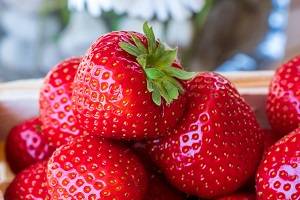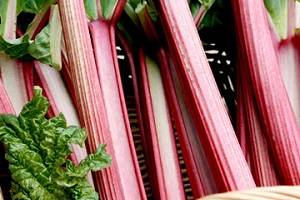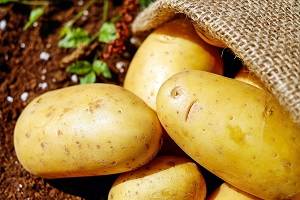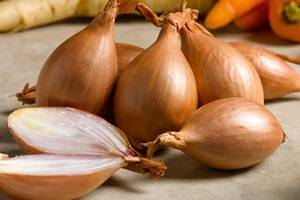Flowers are not only beautiful to behold, many are edible too. What's more, they attract pollinators to your garden, make excellent companion plants and bring scent, colour and interest to your outdoor space. If you want to sow your own flower seeds so that you can harvest their edible petals, here are the best varieties to grow.
Edible flowers through history
Flowers have been used throughout history to enhance the flavour and appearance of food, both savoury and sweet. Ancient Romans drank tea made from dried petals and medieval monks used viola blooms to make a sweet syrup.
Today we know that edible flowers bring a wealth of health benefits as well as adding colour and flavour to food. Rose petals, for example, are rich in antioxidants, while Lavender is thought to calm the nervous system and prevent nausea. Many edible flowers are high in Vitamins like C and A too.
Edible flower chart
| Edible Flower* |
Tastes Like... |
Which parts are edible? |
Best eaten with / in |
| Calendula |
Peppery/citrus tang |
Petals |
Salads, stir-fries, coleslaw, biscuits, pasta dishes |
| Carnation |
Peppery/clove-like |
Petals |
Salads, meat dishes, desserts e.g. cheesecakes |
| French Marigold* |
Citrus |
Petals & leaves |
Salads, stir-fries, biscuits |
| Hollyhock |
Mild marshmallow |
Petals, leaves & roots |
Garnish, salad dressings, fish dishes |
| Lavender*** |
Mild sweetness |
Flowers |
Biscuits, herbal tea, cakes, creme brulee, ice cream |
| Nasturtium |
Peppery/watercress |
Whole flower & leaves |
Salads, stir-fries, curries, pasta dishes, meat dishes |
| Pansy |
Lettuce |
Whole Flower |
Garnish, salads, sandwiches, cake decorations, fruit salads |
| Sunflower |
Nutty |
Buds, petals & seeds |
Bread, biscuits, cakes. Unopened buds can be steamed like artichokes |
| Viola |
Mild sweetness |
WHole flower |
Garnish, salads, sandwiches, cake decorations |
* Should only be eaten in moderation and DO NO EAT AFRICAN MARIGOLDS
*** Lavender is very strong, only a tablespoon is needed to add flavour
How to grow the best edible flowers
Growing your own edible flowers is easy. Here's how to grow some of our favourites.
Calendula
Calendula flower petals make a tasty addition to summer salads and stir-fries. Direct sow your calendula seeds from March to May into finely raked, moist, warm, weed free soil. Bury the seeds about 13mm (½") deep. As the seedlings develop, thin them out in stages to achieve a final spacing of 23-30cm (9-12"). For early flowering the following year, you can also direct sow seeds in August and September.
Try Calendula 'Orange King', 'Pink Surprise', 'Snow Princess' and 'Lemon Zest' for an interesting addition to salads or as pretty decorations for cakes and biscuits.
Carnations
Carnation petals have a slight peppery taste and are good with grilled meats, salads and stir fries. Sow your carnation seeds from January to April in a propagator or in a greenhouse, at approximately 15-20°C (60-68°F) using a good quality, moist compost. Cover the seeds with 3mm (⅛") sieved compost. Transplant seedlings, spacing them out 5cm (2") in trays and grow them on with plenty of good light. Acclimatise plants and pinch out their growing tips before planting out 30-40cm (12-16") apart in a sunny position. Use bushy twigs to support plants if necessary.
Try 'Chabaud Giant Mix' for a great selection of flower colours.
French Marigolds
French Marigold (Tagetes patula) flower petals make a tasty addition to summer salads and have a citrus type flavour. Thinly sow your marigold seeds into pots or trays of finely sieved, moist compost between February and May. The seeds should be about 6mm (¼") deep.
Keep them on a windowsill or in a greenhouse at approximately 15-20°C (60-68°F) until the seedlings are big enough to transplant. Then, space your seedlings 5cm (2") apart in trays and grow on. Acclimatise your plants to outdoor conditions and choose a sunny outdoor location for their final position. Plant out 15-23cm (6-9") apart. Alternatively, wait until May and direct sow your seeds into finely raked, moist soil where you want them to flower.
Try French Marigold varieties 'Boy-O-Boy Mix', 'Red Brocade', 'Fantasia Mix', and 'Orange Winner'.
Hollyhocks
Hollyhocks are completely edible including the roots, leaves and blossoms. The petals of these statuesque cottage garden flowers make a jewel-coloured syrup, a traditional remedy for soothing irritated mucous membranes and helping to ease a dry cough.
Sow your hollyhocks between April and June in a propagator or in a greenhouse, and keep them at approximately 15-21°C (60-70°F). Cover the seeds lightly with sieved compost. When the seedlings appear, transplant them into trays, and grow on. Acclimatise your plants gradually before planting them out into a sunny position, about 38-45cm (15-18") apart. Alternatively, sow your seeds directly outside in June.
Try Hollyhock 'Chater's Mix', 'Black Knight' and 'Cough Syrup Mix'.
Lavender
Lavender has a strong taste so, in cooking, a little goes a long way. It can be used in stews, sauces, cakes, and tastes delicious in ice cream or sorbet. Sow your lavender seeds under glass from January to March for flowers from August to September.
Alternatively, sow 3mm deep into a well-raked seedbed outdoors from April-June, and cover lightly. They will begin flowering from June to September the following year.
If you want instant impact, buy plugs or garden ready lavender plants and enjoy the scent and flavour almost immediately.
Try lavender 'Multifida Blue Wonder' or go for classic 'Hidcote Blue'.
Nasturtium
Nasturtium flowers have a peppery taste and are great when added to salads, stir fries and curries. Sow your nasturtium seeds between March and June directly into finely raked, moist, warm, soil where you want them to flower. For best results, they should be 13mm (0.5") deep. As the seedlings develop, thin them out until they're about 25cm (10").
Try Nasturtium 'Jewel Mix', 'Purple Emperor', and 'Dayglow Mix'.
Pansies
Pansy petals have a mild, sweet flavour, great for adding to desserts such as crème brulee and fruit salads. Sow your pansy seeds from February to April into pots or trays of good quality, sieved compost. The seeds should be about 6mm (¼") deep. Stand the trays in a cool greenhouse until the seedlings develop, then transplant them into larger trays about 5cm (2") apart, and continue to grow them on in a cool, shady place.
Plant the seedlings into their flowering positions 10-15cm (4-6") apart. Spring sowings should be planted from mid-May to mid-June, and summer sowings (June-July) should be planted out in September and October to flower the following spring.
Try pansy varieties 'Adonis', 'Frizzle Sizzle Raspberry' and 'Frizzle Sizzle Orange'.
Sunflowers
Sunflower seeds (good for sprinkling on bread) are delicious, and the petals are edible too. Sow your sunflower seeds from March to June directly into finely raked, moist, warm, weed-free soil, about 13mm (½") deep. As the seedlings grow, thin them out in stages to achieve a final spacing of 30-45cm (12-18"). Support the plants as they develop to avoid the stem being damaged in strong winds.
For earlier blooms, sow indoors in April. Acclimatise plants to outdoor conditions before planting them out mid-late May.
Try these varieties of sunflower: 'Giant Yellow', 'Tiger Eye F1', 'Ruby Sunset' and 'Waooh!'
Violas
Violas are often used as cake decoration. Both the flowers and leaves are edible and bring a welcome hint of sweetness to fruit salads and desserts.
Sow viola seeds under glass between February and April, dusting over with compost so they are about 3mm (⅛") deep. When your seedlings emerge, transplant them into trays about 5cm (2") apart and grow on. Plant into tubs or baskets in May, after carefully acclimatising the young plants to outside conditions. Alternatively, plant them outside at about 23cm (9") apart as a ground cover edging.
Try Viola 'Midnight Runner' and 'Fancy Shades Mix'.
How to pick and prepare your edible flowers
Only ever harvest petals from a chemical-free area, and away from tracks or trails and animal enclosures. Remember, if in doubt about whether a flower is edible or not, err on the side of caution and avoid it. Also steer clear of any old, dull or bruised flower heads and try to consume any flowers as soon as possible after picking. You can store your flower heads in the fridge for a day or two until you are ready to eat them.
The petals are the best part of most edible flowers, so remove the stem, along with the male and female parts of the centre before adding to your dish. Here are some of our top tips:
• For beautiful cocktails, freeze flower petals into cubes of ice
• Preserve petals in a sugar syrup
• Crystallise large petals like hollyhocks and roses to decorate cakes
• Sprinkle colourful petals over a green salad
Common garden flowers to avoid eating
The following flowers are not edible, and should never be consumed:
• Daffodil (Narcissus)
• Foxglove
• Oleander
• Lily of the valley
• Rhododendron
• Hydrangea
• Larkspur
• Wisteria
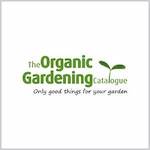 Strawberry Plants
Strawberry Plants
 Soft Fruit
Soft Fruit
 Fruit Trees
Fruit Trees
 Rhubarb Crowns
Rhubarb Crowns
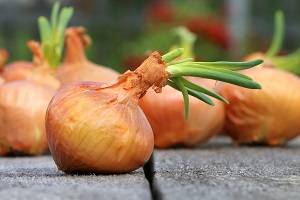 Onion Sets
Onion Sets
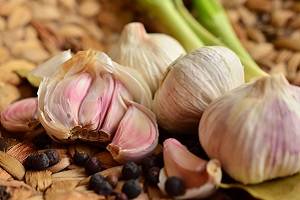 Garlic Bulbs & Plants
Garlic Bulbs & Plants


